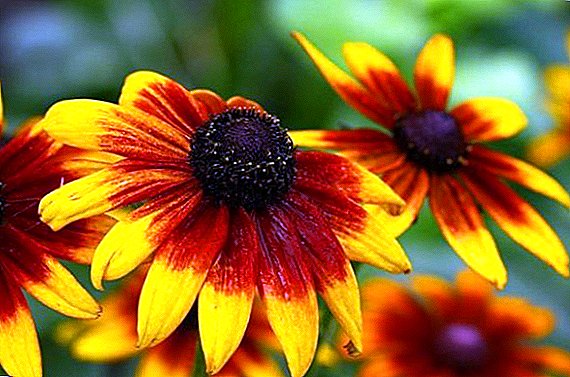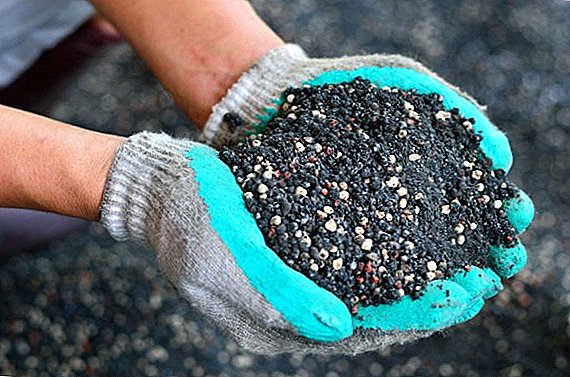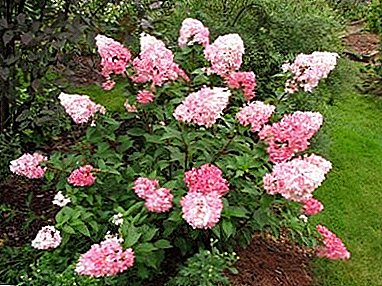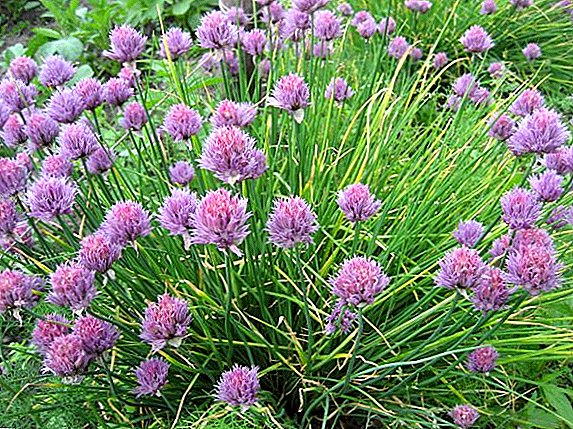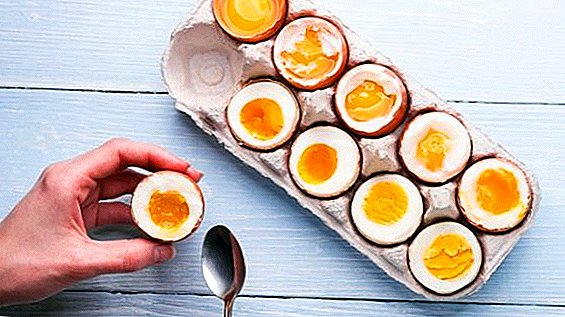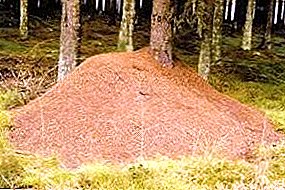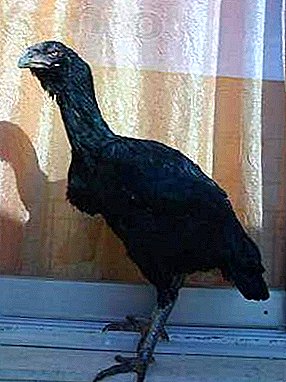
An apple tree is a favorite fruit tree of almost every gardener.
Fans or experienced gardeners love to grow this tree because of the beneficial properties of its fruit and the relative ease of caring for it.
What kind is it?
The variety Young naturalist is an apple tree mid autumn ripening. The fruits have good keeping ability, but can only be stored in wooden boxes at a cool room temperature until December.
Pollination
For pollination better fit varieties of autumn and winter ripening.
Description varieties Young Naturalist
Consider separately the appearance of the apple: tree and fruit.
 In the photo you can see what a young naturalist sort of apple tree looks like.
In the photo you can see what a young naturalist sort of apple tree looks like.
Trees varieties Junior Naturalist are characterized by mostly tall, can reach up to four meters in height.
Crohn has a rounded shape, has a strong density due to the fact that the branches of the tree are located almost at an angle of 90 degrees relative to the trunk of the apple tree.
The bark of the apple tree has a dark brown color, the shoots grow of medium thickness, their color is light brown. The leaves of this variety are small in size.
The shape is rounded, to the top of the sheet sharpens. In time, a light edge may be observed on the back of the sheet. The flowers of the apple tree of this variety are very large in size, the color is white-pink.
The size of the fruit of an apple tree A young naturalist is usually characterized by a small amount: weighing up to 130 grams.
 And in this photo you can see the apples of the Young Naturalist variety:
And in this photo you can see the apples of the Young Naturalist variety:
The shape of the apples is round, slightly flat.. The color of the fruit is yellow-green, most of the surface of the apple can be covered with a striped bright scarlet blush.
Subcutaneous points of pale green color, slightly visible, the amount is very small.
The flesh of the fruit has a pleasant sweet-sour taste, the density is medium, appetizing and tender, creamy-white.
Basically, the fruits are formed on kolchatka.
A photo



Breeding history
The history of selection originates in the Research Institute of Horticulture named I.V. Michurin. There, in 1935, breeders using the method of crossing two varieties: winter Welsey and autumn Cinnamon Striped, bred a new apple variety - Young Naturalist (abbreviated form - "Yunnat"). Experienced breeder of fruit crops Sergey Isaev led this work.
Natural growth region
In 1993, the Young Naturalist variety was registered in the Volga-Vyatka region. Also in the regions of natural growth of this variety include: Yaroslavl, Vladimir, Ivanovo region. Northern regions are recommended for planting apples of this variety, as they are adapted to grow in adverse conditions.
Yield
 The variety "Young Naturalist" is distinguished by its rapid fruiting - the harvest of apples begins to be brought in the third or fourth year after planting.
The variety "Young Naturalist" is distinguished by its rapid fruiting - the harvest of apples begins to be brought in the third or fourth year after planting.
When yields are very high, fruiting ceases to be regular, which is one of the main disadvantage of this variety.
You can shoot the fruit in the second half of September, and full ripeness of apples comes in early October. Apples have high transportability, methods of use are universal. Trees have high frost resistance.
Planting and care
Necessary information about the main intricacies of planting and caring for apple trees.
Any gardener will say that there is not exactly a certain season for planting an apple tree that would have an advantage over another. The main landing rule is need to plant either in the spring, when the sun's rays had not yet had time to warm the earth, or in the fall, when it was not cold.
It is necessary to begin with preparation of the place for landing. To do this, choose a territory in the garden or on the estate, where the apple tree has not yet grown (as the trees emit harmful substances for their species into the soil) and several months before the expected planting date, dig a hole.
 If the soil is fertile enough, the pit should not be very deep - about 40 centimeters deep and about 80 centimeters in diameter.
If the soil is fertile enough, the pit should not be very deep - about 40 centimeters deep and about 80 centimeters in diameter.
For a land that does not have a rich composition, you will need a hole for about 80 centimeters deep, and in diameter should be a little over a meter.
Digging a hole, it is necessary to lay the top layer separately from the bottom, since the first one is fertile.
The bottom layer will be needed for the powder space around the seedling. Third pits are first buried with the top layer without additives, then mixed with fertilizers (mineral or organic). A small hillock should rise above the pit - this is necessary so that before planting the soil has enough time to soak in moisture and settle.
When the planting date is suitable, the seedling must be cleaned from dried twigs and bark. It is better to plant a tree together - so you can plant carefully without damaging the root system.
The roots need to spread out over the hill, so that they are right on the ground level. Immediately after planting, the tree should be watered with two or three buckets of water. It is desirable to tie the seedling to a peg, which is set in advance in the embankment.
To be satisfied with the harvest, every apple tree needs proper and timely care.
For the winter, the tree must be protected from freezing and rodents.. To do this, the trunk is tied with fir or pine branches. You can also cover the bottom of the tree or fallen leaves, or small manure.
 In the spring it is necessary to produce sanitary pruning of apple trees: diseased, damaged or dried branches must be removed and destroyed.
In the spring it is necessary to produce sanitary pruning of apple trees: diseased, damaged or dried branches must be removed and destroyed.
And the cut place is processed by garden pitch.
Pruning helps regulate growth and yield., improves the quality of the fruit.
Also in the spring, it is necessary to otpattyvanie wood, so that hungry rodents after the winter did not attack the bark of the tree.
To ensure protection, it is possible to decompose the poison before the onset of winter, since it is not always possible to tread a layer of snow around the tree.
During the harvest period, make sure that the branches of the apple tree do not experience a heavy load from the fruit, as there is a risk of the branches breaking. To do this, you can install the props.
Diseases and pests
Grade Young naturalist famous for its weak susceptibility to scab, even in the most raw period.
The main danger for apple trees are still pests that can badly spoil not only the health of the apple tree, but also the yield: apples lose their presentation, and some pests are able to deprive the tree of the crop.
To control pests, chemicals will be needed, for example, iron or copper sulphate, Bordeaux mixture, copper oxychloride. Additional care is also needed - timely cleaning of the bark, treatment of wood wounds, sanitary pruning and whitewashing. The most common pests are:
Apple Blossom
 This insect is dangerous because it damages the kidneys, and in the buds lays its eggs.
This insect is dangerous because it damages the kidneys, and in the buds lays its eggs.
A sign of the appearance of this pest are drops of kidney juice and unblown buds, leaves.
The fight against it should occur when the kidneys swell. Insects need to shake off the tree, previously spread out a canvas near it. Then, when the buds begin to bloom, the apple tree should be sprayed with a 0.2% dilox solution.
Sawfly
This pest completely eats away the young ovary, can penetrate into the apples. To fight the tree is treated with karbofos before apple blossom.
Moth
These insects can destroy the fruit from the inside, so damaged apples fall prematurely.
It is necessary to start fighting with the moth moth in early spring, cleaning the bark of the tree.
 Also after the apple tree has faded, it needs to be treated with a special solution: 40 grams of lime are needed for 30 grams of calcium arsenate. This mixture is dissolved in a bucket of water.
Also after the apple tree has faded, it needs to be treated with a special solution: 40 grams of lime are needed for 30 grams of calcium arsenate. This mixture is dissolved in a bucket of water.
These measures will help to avoid damage to the apple tree.
Apple tree A young naturalist has many advantages: apples have a high presentation, decent yield, a tree has a special gene that has developed resistance to scab. However, there are drawbacks: with increased yields, fruiting becomes irregular.



